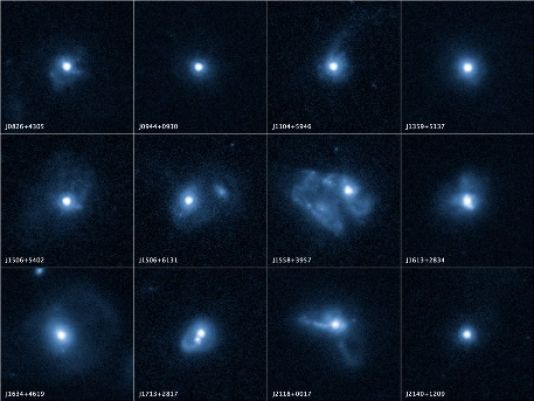17 November 2014
An international team of astronomers, including Dr Jim Geach from the University of Hertfordshire have uncovered new insights into the processes that have shaped galaxies, using NASA’s Hubble Space Telescope and Chandra X-ray Observatory telescope.
One of the mysteries of the Universe is the question of how all the galaxies we see around us came to be.
Challenging beliefs
Before their study, it was assumed that stars alone could not drive out gas to the velocities the team observed and that something more powerful like a black hole would be needed. The team have challenged that belief; showing that if a galaxy is compact enough, and forming stars at a high rate, it will produce the velocity required, without needing a central black hole.
Merger galaxies
The paper, led by Paul Sell, Texas Tech University in Lubbock analyses 12 galaxies, each at the final stage of a 'merger' – where two individual galaxies have collided. The merger galaxies caused gas and stars to pile up at its centre, triggering new star formation. The study shows that these very compact galaxies are ejecting gas into space, caused by the energy from the new central stars. This gas is the fuel needed to make the future generation of stars. Once all of the gas is gone, these galaxies will rapidly turn into 'passive' galaxies composed of only aging stars.
Understanding galaxy formation
Co-author of the paper Dr Jim Geach explained: "We have discovered a remarkable class of galaxy that compared to the Milky Way is extremely compact and it has recently been forming stars hundreds of times faster. This phase of evolution is very brief, so these things are hard to find. Our analysis is providing key information on a poorly understood part of galaxy formation."
Based on the data from the Hubble and at Chandra, these youthful compact galaxies are blasting out gas when two gas-rich galaxies collide, funnelling into a very dense central core. The large amount of gas compressed into the small space ignites the birth of numerous stars and the energy released from this forms the outflows of gas into space.
The paper, "Massive compact galaxies with high-velocity outflows: morphological analysis and constraints on AGN activity", was published in the July 14 Monthly Notices of the Royal Astronomical Society (http://adsabs.harvard.edu/abs/2014MNRAS.441.3417S).















